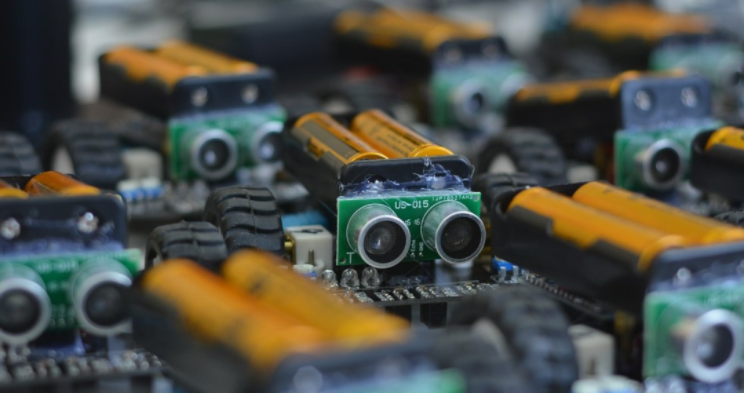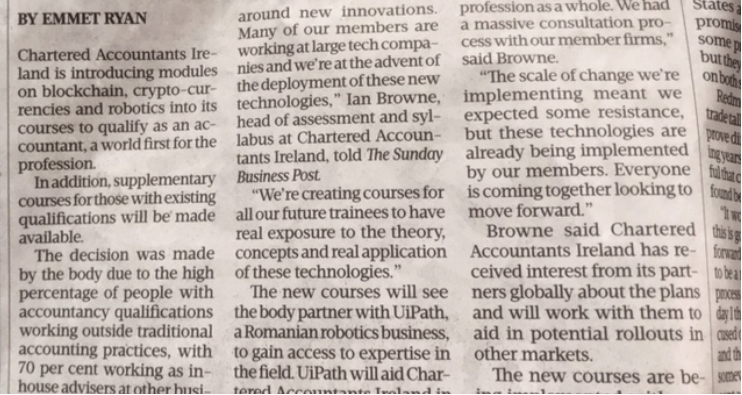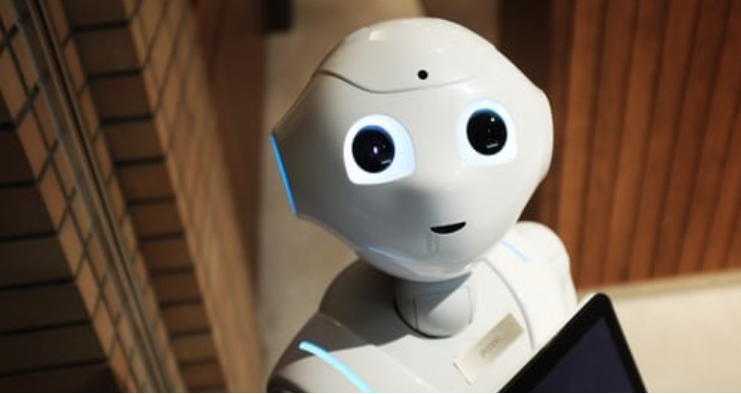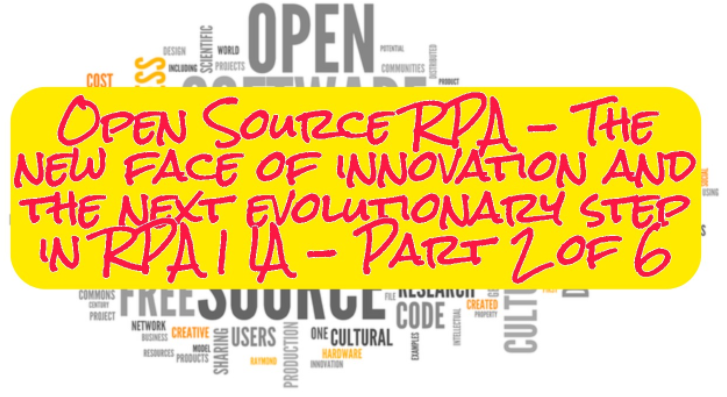H – is for Human | Hybrid RPA | HR 4.0 | Hype Curve | Hyper Care | Hard Work not Hype | Hyper Automation | Human in the Loop
Welcome to the eight part of a 26 part series charting the A – Z of Robotic Process Automation (RPA), Intelligent Automation (IA) and Digital Transformation (DT). Having already looked at the letters A, B, C, D, E, F and G but today’s letter is the letter ‘H’.
Human: Its 2020. Organisations must digitise their services. However, in the rush to digitise, firms often neglect the number one resource that provides their competitive advantage (i.e. their people). Organisations should automate the robot out of the human. However, they must also remember that it is their people who put passion and personalisation into processes not machines. To succeed in the digital age organisations need to balance automation and human connection to build better employee experiences and deeper customer connections.
“Automation and digitisation succeed best when both customers and colleagues’ needs are considered. Using technology to free humans from mundane repetitive work is the right thing to do. Freeing people to concentrate on creative, innovative and emotionally engaging work enables people to live their very best lives and deliver their best results.”
Gourav Datta, Intelligent Automation Delivery Leader
Hybrid Automation: Some RPA providers primarily offer ‘attended automation’ where humans interact with software robots. Other providers offer ‘unattended automation’ where unattended robots run to a schedule ideally with no human intervention. However, some vendors offer ‘hybrid automation’ with humans and digital workforces passing tasks back and forth (e.g. Kryon). In a hybrid RPA environment, attended and unattended bots work seamlessly and simultaneously to integrate front-end and back-end processing without prompt.
- Kryon (YouTube)
Hybrid automation combines attended and unattended RPA to enable work to automatically pass between ‘bots’ or via employee prompt, allowing a digital robot worker and employees to work on different tasks simultaneously. This works especially well for processes that have both structured and unstructured data; key decision points requiring human input or processes that may have multiple variations or outcomes.
Hard Work Not Hype: There is tremendous excitement and hype when it comes to the next emerging technology. One technology, which has been heavily hyped is Robotic Process Automation (RPA). RPA is a technology designed to replicate human key strokes.
Video 1: What is Robotic Process Automation (YouTube.com & Deloitte video)
RPAs ‘digital workers’ take on logical, repetitive, mundane, tasks that would otherwise be completed by people but at less cost. Many firms have struggled to scale RPA as they quickly run out of ready to automate, repetitive tasks. Getting RPA is not easy; it requires a lot of hard work, but if implemented correctly it can bring tremendous cost and efficiency benefits to an organisation.
“The main issue with scaling RPA stems from the initial sales – hype that RPA is easy, and that anyone can do it. Organisations and vendors lost sight of the fact that RPA should be approached similarly to any other formal business initiative. You will need experienced people involved, they will have technical skills, strong business process knowledge and very importantly the support of senior management who will assist in the demolition of internal roadblocks. To scale successfully you will need solid core foundations for your RPA environment and a very clear understanding of the potential road-map for your RPA journey.”
Dermot Carroll, RPA Consultant
Organisations that optimise, lean, then automate and digitise their processes can gain tremendous value from Intelligent Automation. Getting value from RPA often involves combing RPA with other technologies to automate processes end-to-end and that takes time (e.g. machine learning, natural language processing, OCR, APIs, Python, SDKs, etc.).
“Your success will depend on defining a clear direction of travel, ensuring the correct roles and people are in place to achieve this and that they feel safe to experiment, learn, adapt and evolve quickly. Be aware that there are no magic bullets, no quick wins for long term success…like everything else in life, the best results are achieved through consistent focus, application, assessment and re-evaluation.”
Paul Arnold, Head of Product and Development at Cortex Intelligent Automation
Hype Cycle: Every year Gartner publishes a graphical and conceptual presentation of existing and emerging technologies. Gartner graphs the maturity of these technologies through five phases.

Figure 1: Gartner Hype Cycle 2019 (Source; Gartner)
The Gartner Hyper Cycle sometimes get criticised for not matching precisely with technological uptake. In practice, it is very interesting for firms to see what emerging technologies are considered hot or not; and therefore where firms should prioritise investment dollars.
- Gartner Hype Cycle (Gartner)
Hyper Automation: Hyper-automation, is a term used to describe the use of many different intelligent technologies in combination with ML to automate processes (e.g. machine learning, natural language processing, OCR, APIs, Python, workflow software and process discovery software, etc.).
- What is hyperautomation? (UiPath )
Video 2: HyperAutomation (Gartner)
“Hyperautomation starts with Robotic Process Automation (RPA) at its core and adds artificial intelligence (AI), process mining, analytics, and other advanced tools, including Intelligent Business Process Management (BPM) suites and low-code application platforms. Hyperautomation deals with the application of advanced technologies, including artificial intelligence (AI) and machine learning (ML), to increasingly automate processes and augment humans. Hyperautomation extends across a range of tools that can be automated, but also refers to the sophistication of the automation (i.e. discover, analyse, design, automate, measure, monitor, reassess.)” Gartner
Hyper Care: The stabilization period after a system launch is often referred to as ‘hyper care’. The main purpose of the hyper care period is to closely monitor the smooth functioning of a newly upgraded or implemented application. The rule of thumb is that, when hyper care support ends, an application is stable and can be released to more end users.
“Hyper care is a critical process to support deliver a robust application and importantly, user confidence in the application itself.”
Pavani Koudri, RPA & AI Architect
Human in the Loop (HILP): The future of work is humans and robots working together. By combining humans and digital workers it is possible to drive more and better process outcomes. A human is integral part of the process and is always able to change the outcome of an event.
Video 3: Video example of Enate and UiPath Human in the Loop Combination (YouTube)
This article highlighted things relating to intelligent automation and digital transformation beginning with the letter “H”. There are many H‘s organisations need to consider but what H do you think is the most important?
If you like this article then you may find these useful too.
- How to build a business case for Intelligent Automation and Robotic Process Automation
- 30 ways to build a pipeline of processes suitable for Robotic Process Automation (RPA) and Intelligent Automation (IA)
- I’ve met 100+ RPA developers but these are the 15 signs of an ‘exceptional’ RPA developer!
- 8 questions to ask to ensure you select the ‘right’ processes to automate using RPA | IA.
- 14 rules for Robotic Process Automation (RPA) and Intelligent Automation (AI) success
- The A-Z of Robotic Process Automation, Intelligent Automation and Digital Transformation
- 8 Key Roles in Your RPA Centre of Expertise
- 14 rules for Robotic Process Automation (RPA) and Intelligent Automation (AI) success
- The biggest lie told to RPA customers – 50 robots equals success
- 40 essential selection criteria to choose an RPA platform
If this could benefit someone else tag them and share this.
Free to reuse: We are a community of RPA and Intelligent Automation experts with years of real world experience. We have stories to tell and the scars to show for it. We share our collective wisdom for free to simply provide as much value as we can to you. Therefore, if you want to post this article on your LinkedIn page then please feel free to do so. The more information we share within the RPA community the more likely businesses are to succeed with this excellent technology.
Further Help: If I can help you in any way please do reach out.
Note: The views expressed above are our views and not those of my employer or the employers of the contributing experts.








Leave a Reply